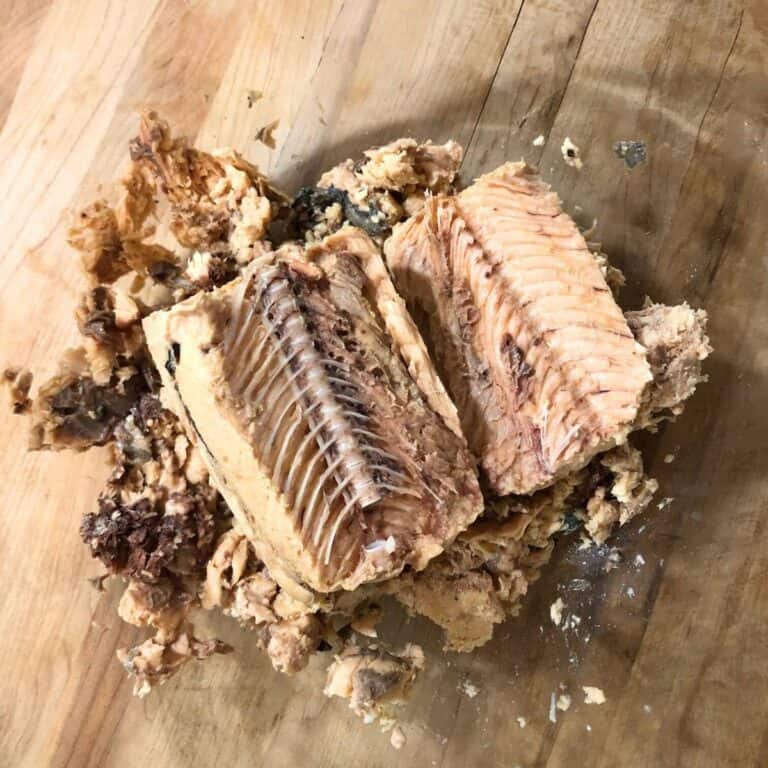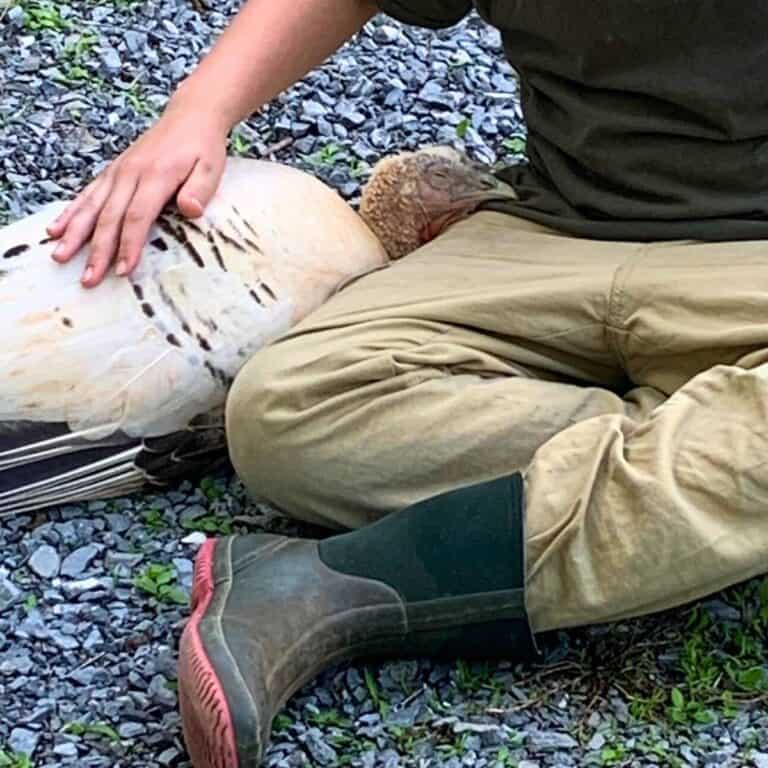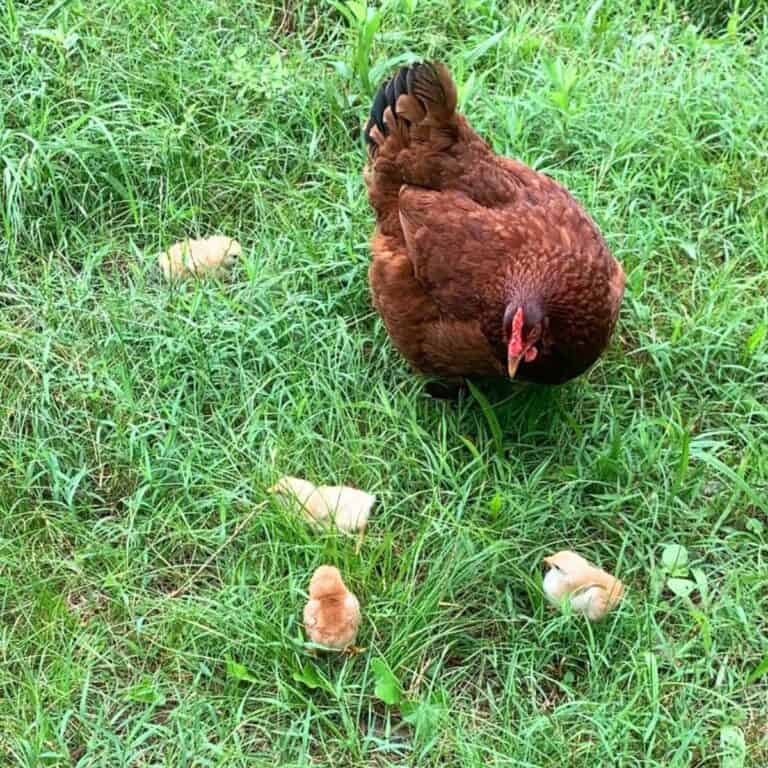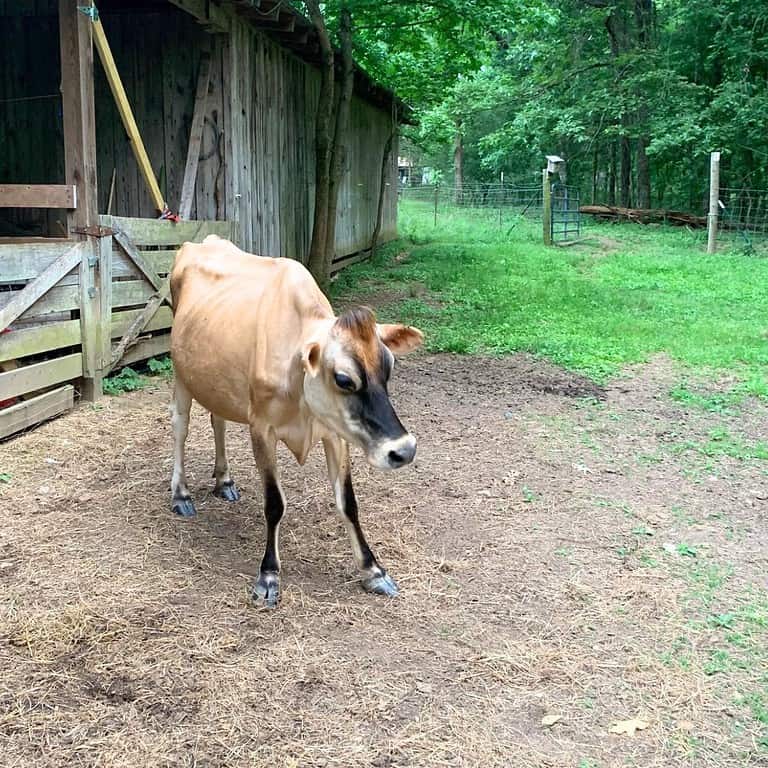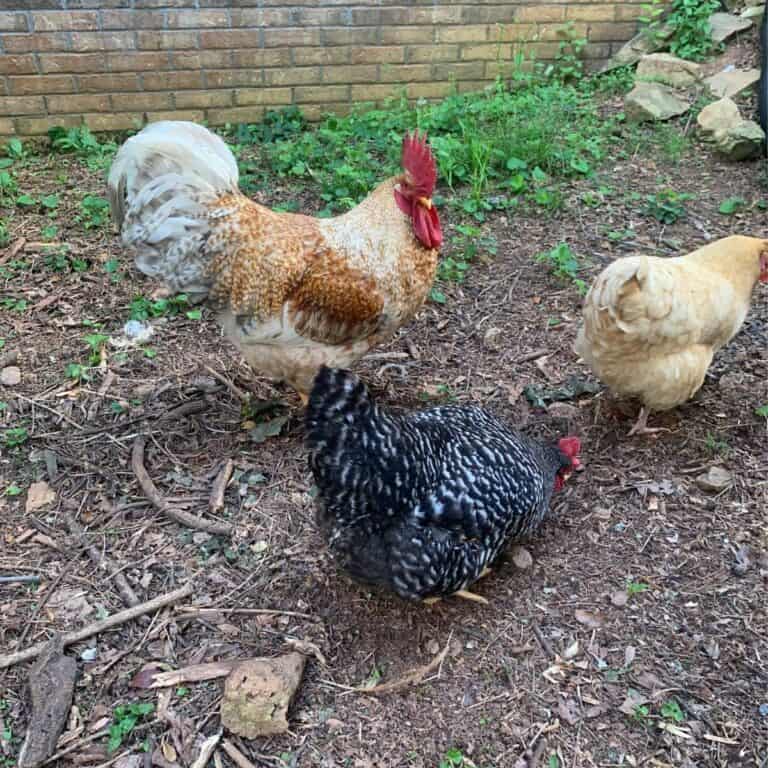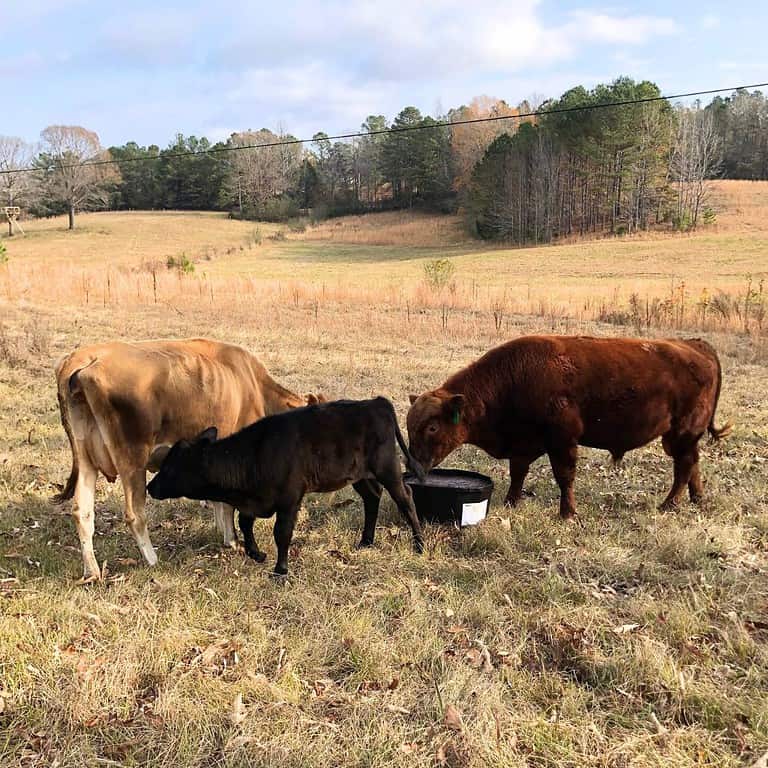21 Mistakes to Avoid When Buying a Milk Cow
Buying a milk cow is an expensive investment and I want to help you avoid some common mistakes! Doing some research and homework up front can save you a ton of heartache and money!
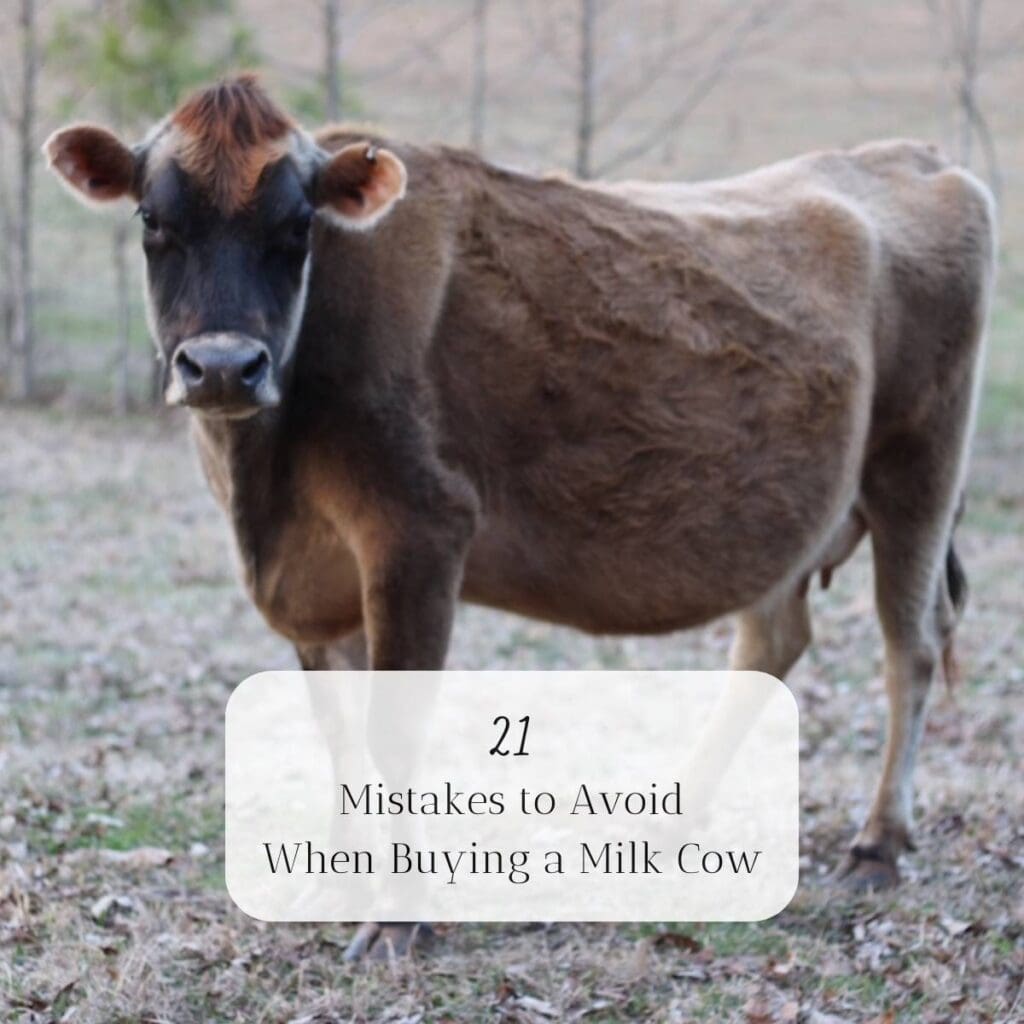
21 Mistakes to Avoid When Buying a Milk Cow
- Don’t buy a freemartin.
- Don’t buy a flighty or scared milk cow.
- Don’t buy a cow with a history of mastitis.
- Don’t buy a milk cow that’s too young.
- Don’t buy a milk cow that’s too old.
- Don’t buy a milk cow from a dairy farm if you plan on milking by hand.
- Don’t buy a cow that’s too large.
- Don’t buy a cow that’s too small.
- Don’t buy a milk cow that produces too much milk for your needs.
- Don’t buy a milk cow that doesn’t produce enough milk for your needs.
- Don’t buy a milk cow without testing her genetics if A2A2 milk is important to you.
- Don’t buy a milk cow that kicks.
- Don’t buy a beef cow if you are looking for a dairy cow.
- Don’t buy a milk cow that doesn’t produce cream.
- Don’t buy a milk cow with hoof problems.
- Don’t buy a milk cow that won’t thrive in your climate.
- Don’t buy a milk cow that won’t thrive on your pasture.
- Don’t buy a milk cow until you have perimeter fencing in place.
- Don’t buy a milk cow until your water system is in place.
- Don’t buy a milk cow until you have a stall set up to protect her calf.
- Don’t buy an expensive or exotic breed of milk cow.
Buying a milk cow is an expensive investment. Let’s discuss each mistake so that you can avoid making them!
This post contains affiliate links, which means I make a small commission at no cost to you if you place a qualifying purchase through any of the links. Read my full disclosure here. Thanks for your support!
1. Don’t buy a freemartin.
A freemartin (also known as free-martin and martin heifer) is an infertile female cow with non-functioning ovaries. She will never get pregnant or produce milk, so don’t purchase her.
When a heifer twin shares the uterus with a bull fetus, they also share the placental membranes that connect both the fetuses with their mom.
A joining of the placental membranes occurs at about the fortieth day of pregnancy, and thereafter, the fluids of the two fetuses are mixed. This causes an exchange of blood and antigens carrying characteristics that are unique to each heifer fetus and bull fetus. When these antigens mix, they affect each other in a way that causes each to develop with some characteristics of the other sex.
In a male fetus, this results in decreased fertility when he is grown. In a female fetus, this results in an inability to get pregnant when she is grown…thus, an inability to produce milk.
Buying a milk cow that was born with a twin is risky unless you know for certain that she was born with a twin sister.
2. Don’t buy a flighty or scared milk cow.
You need to be able to handle your dairy cow often, so avoid purchasing a dairy cow that runs away from you. She might be a great breeder, but she will make for a poor milker.
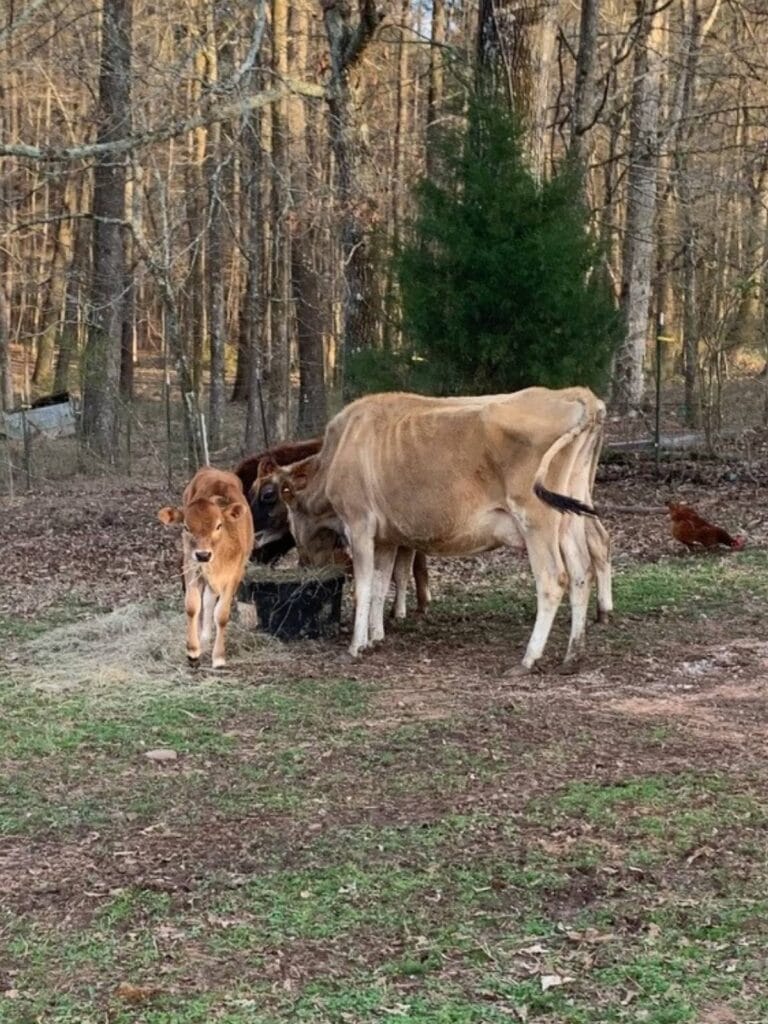
Instead, look for a tame dairy animal that stands still when you walk up to her and lets you rub her.
This means being intentional when you’re shopping for your dairy cow. If the cow runs away from you, cross her off your list. If the cow stands still and lets you walk up to her, keep her on your list.
It’s best to get the most tame cow that you can. That said, cows are creatures of habit and they will eventually get used to you.
3. Don’t buy a cow with a history of mastitis.
It’s very difficult and nearly impossible to get rid of mastitis in a dairy cow. Once she gets mastitis, she will seemingly always get mastitis with every freshening (lactation).
We have experience with a dairy cow that came from a dairy with mastitis, and we did all the right things to get rid of it. We injected her with horrible medicine while she kicked and tried to get away…we had an awful time and STILL didn’t get her cured of it.
It is extremely important to not buy a dairy cow with a known history of mastitis. That said, you can always milk the other three quarters and leave the infected quarter alone to shrivel up. Just be sure that you don’t spread the infection to the other healthy quarters.
If you want to test a cow for mastitis, these mastitis home test indicators are easy to use.
Additionally, you can purchase a whole kit: California Mastitis Test Rapid Test for Early Detection of Mastitis.
4. Don’t buy a milk cow that’s too young.
Don’t buy a dairy cow that’s too young, because there is too much of a time lapse and cost associated with raising her and breeding her before she calves and starts producing milk.
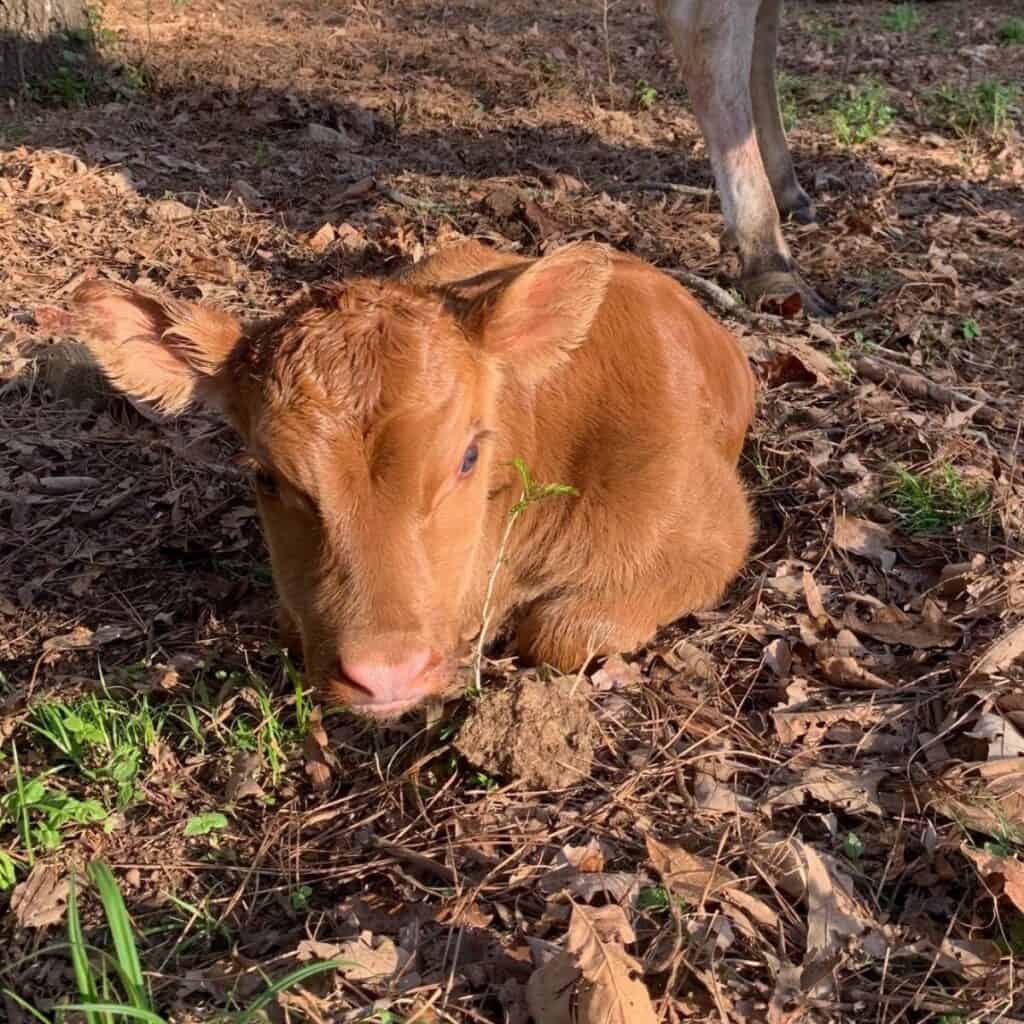
I know it’s tempting to save money by buying a milk cow as a baby along with a sharp discount. However, heifers (female cows that have never had a baby before) have to be at least 15 to 18 months old before they can be bred. And then the pregnancy will last almost 10 months!
That means you won’t have any milk until that cow is about two and a half years old. That’s a long time to feed and shelter an animal without any return on your investment.
The best option is to buy a bred heifer or a bred cow. Then you will only have to wait a few months for her to have her baby and start producing milk. Also, you’re getting two cows for the price of one!
Just be certain that the sire (the bull that bred her) wasn’t too large to be bred with her. Otherwise, her calf will grow too large for her body to safely deliver, and you may end up with one or two dead cows at the end of the pregnancy.
5. Don’t buy a milk cow that’s too old.
Don’t buy a dairy cow that’s too old. Dairy cows can generally only be bred and have calves for about 10 to 15 years if they have been taken care of.
Instead of getting a cow that’s eight or nine years old, aim to get a cow that’s two to three years old. That way you can get a nice return on your investment if you breed her back every year and get one baby plus all the milk your family needs each year.
6. Don’t buy a milk cow from a dairy farm if you plan on milking by hand.
Don’t buy a milk cow from a dairy farm when you plan on milking her by hand because she won’t be used to it, and she will be harder to get milk from.
If you get a dairy cow from a dairy farm, she has been machine milked from Day 1. Cows that have been machine milked for years will have tough callouses on their teats and it will be hard to milk them by hand.
If you’re new to milking a dairy animal, do yourself a favor and choose a milk cow that has soft teats that are long enough to grab, hold, and milk.
I wrote a whole blog post on how to milk a cow if you want to learn more.
However, this is a moot point if you also plan on machine milking your dairy animal.
7. Don’t buy a cow that’s too large.
When you’re shopping for your dairy cow, don’t buy a cow that’s too large. The larger a cow is, the more food she requires just to maintain her body weight. She requires even more food than that to grow a baby and produce milk.
If you live on smaller acreage, it’s best to go with a small to moderate size dairy cow. She won’t need to eat as much, and she won’t destroy your pasture as she walks around on it.
8. Don’t buy a cow that’s too small.
Just as important as not buying a milk cow that’s too large, you shouldn’t buy a dairy cow that’s too small or short.
If you’re going to be milking your dairy cow, you need to be able to put a bucket under her udder if you’re hand milking. If you will be using a milking machine to milk her out, the pumps also need space under her.
When your dairy cow is too small and short, and her udder is just a few inches above the ground, she is not a great candidate for milking. There’s just not enough room under her to fit a bucket or machine pumps, or to move your hands to milk her comfortably.
9. Don’t buy a milk cow that produces too much milk for your needs.
For efficiency’s sake, buy a dairy cow that will produce the right amount of milk to meet your family’s needs. Buying a milk cow that produces too much milk is not smart unless you plan on selling the excess.
Cows that produce a lot of milk will cost you twice as much time and you will drown in excess milk.
If your family drinks a gallon of milk a day, don’t buy a dairy cow that produces eight gallons of milk a day unless you have the time to milk twice a day and are already planning on selling the excess.
Otherwise, you’ll drown in all the milk you get, and you’ll have to purchase an extra refrigerator. You’ll also have to DO something with all that extra milk to stay on top of it.
Cows that produce a lot of milk get mastitis easier.
It’s easier for cows to get mastitis when they produce more than four gallons of milk per day. That’s because it’s so time-consuming to milk them out all the way, which is crucial for keeping mastitis from infecting her.
If you’re in this situation and you already have a cow that produces more milk than you need, just keep her baby with her during the day. Calves tend to keep mastitis in check because they can nurse on demand.
It’s harder to dry off a cow that produces a lot of milk.
Something else to consider is that cows that produce more than four gallons of milk per day are harder to dry off.
You should “dry off” your dairy cow around 2 or 3 months before her next baby is born so that all her energy goes to growing a healthy baby instead of producing milk. During this time, you spread out your milking times so that you go longer and longer in between milking, and eventually you stop milking.
For cows that produce more than four gallons of milk per day, it takes a lot longer to get their bodies to quit producing all that milk.
10. Don’t buy a milk cow that doesn’t produce enough milk for your needs.
Don’t buy a cow that only produces half a gallon of milk a day if your family drinks a gallon or more per day. Cows that don’t produce enough milk will always leave you wanting more.
Not only will it cost you your investment of purchasing her and your investment of time spent milking her, but you’ll also still have to go to the grocery store to purchase milk to meet your family’s needs. Who wants to do that?
It’s more efficient to buy a dairy animal that meets your family’s needs exactly. That way there’s no wasted time or money.
11. Don’t buy a milk cow without testing her genetics if A2A2 milk is important to you.
If you have dairy sensitivities and can only consume A2A2 milk, make sure you do genetic testing before purchasing the dairy cow in question to confirm her genetics and ability to produce A2A2 milk.
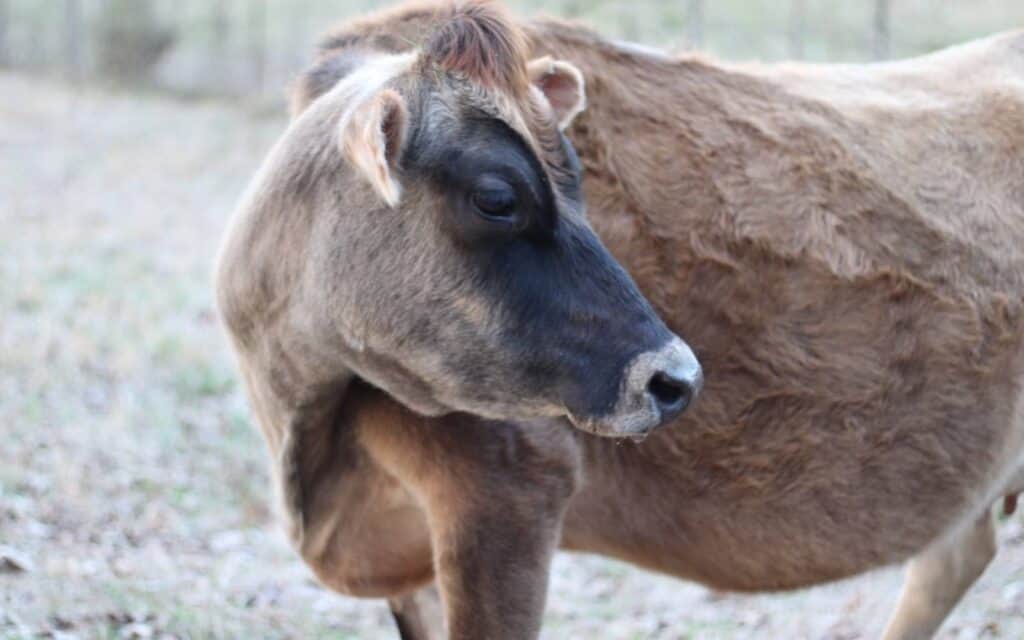
The test that is required to determine what milk she will produce is easy and cheap. It’s worth it to have the dairy cow tested if she’s not already tested by the seller. Make sure you have a copy of the paperwork.
In short, do your due diligence with the animal you’re considering purchasing.
12. Don’t buy a milk cow that kicks.
This one is important for safety reasons, but don’t buy a dairy cow that has an instinct to kick when you put your hands on her belly or udder.
The kicking habit can be trained out of a dairy animal by an expert, but if you’re a first-time dairy cow owner, or one that has never milked before, the learning curve is steep. It will be more efficient for you to purchase a dairy cow that doesn’t kick.
When you shop for your dairy cow, make sure you talk to the owner about how they milked her and whether or not they had any issues with her kicking.
If she’s currently lactating, ask the owner to milk her or ask permission for you to milk her. If she’s not currently lactating, make sure you can rub her belly, udder, teats, and legs without her kicking or running off.
13. Don’t buy a beef cow if you are looking for a dairy cow.
This may seem like a no-brainer, but beef cows just won’t produce milk as efficiently as a dairy cow. So don’t buy a beef cow when you’re looking for a dairy cow.
If you see a cheap half-Jersey, half-Angus “dairy” cow for sale, it is probably best to avoid the temptation of buying her.
Your return on investment is probably not going to be as high as you’d like. Spending just a little bit more money up front to ensure your dairy cow comes from a good genetic line will save you money in the long run.
14. Don’t buy a milk cow that doesn’t produce cream.
Don’t buy a milk cow that doesn’t produce a sufficient amount of butterfat in her milk. Having an abundance of cream to make butter and cheese is half the fun of owning a milk cow!
As hard as it is to believe, not all milk cows produce a good amount of cream. Every dairy animal is different, and the properties of their milk are also different.
Some cows are really good at producing a large volume of milk but don’t have the butterfat you’re looking for. Farms sometimes breed milk cows for milk quantity and not necessarily for milk quality.
It’s not unheard of for a dairy cow to not produce any significant cream in her milk. So, if making butter and cheese is what you want to do with your dairy animal, test and see what the butterfat content.
There are tests available for checking the butterfat and nutrient content, but the dairy cow has to be producing milk in order to do that test. Then the sample of milk is sent off to a lab for testing.
If you can, purchase some of her milk and store it overnight to see how thick the cream line is at the top of the milk jar the next day. You can also determine the texture of her milk simply by drinking a glass of milk the following day. Some dairy cows produce an almost gritty milk…especially if they have been fed a lot of grain.
15. Don’t buy a milk cow with hoof problems.
Few things are more important than a cow’s hooves. Make sure you get a good look at a dairy cow’s feet before you purchase her. Make sure that she can walk around normally and isn’t limping.
Did you know that feeding grain makes the hoof horn (and head horn) grow faster than normal? That makes a strong case for letting your dairy cow graze on pasture and eat grass!
Buying a milk cow with healthy feet is important and should be a priority.
16. Don’t buy a milk cow that won’t thrive in your climate.
Do your research and buy a dairy cow that is heat-tolerant or cold-tolerant depending on your climate. This is where genetics can make a big difference.
Popular heritage milk cows that can thrive in both hot and cold climates include:
- Jersey
- American Milking Devon
- Dutch Belted (also known as “Oreo cows”)
- Guernsey
17. Don’t buy a milk cow that won’t thrive on your pasture.
Some dairy cows are better about grazing and foraging than others. If you have lush, thick, flat pasture land available for your cow, you can pretty much bet that any dairy cow will do very well.
However, if you have a rugged mountain side, you’ll need to be more selective about the breed you purchase.
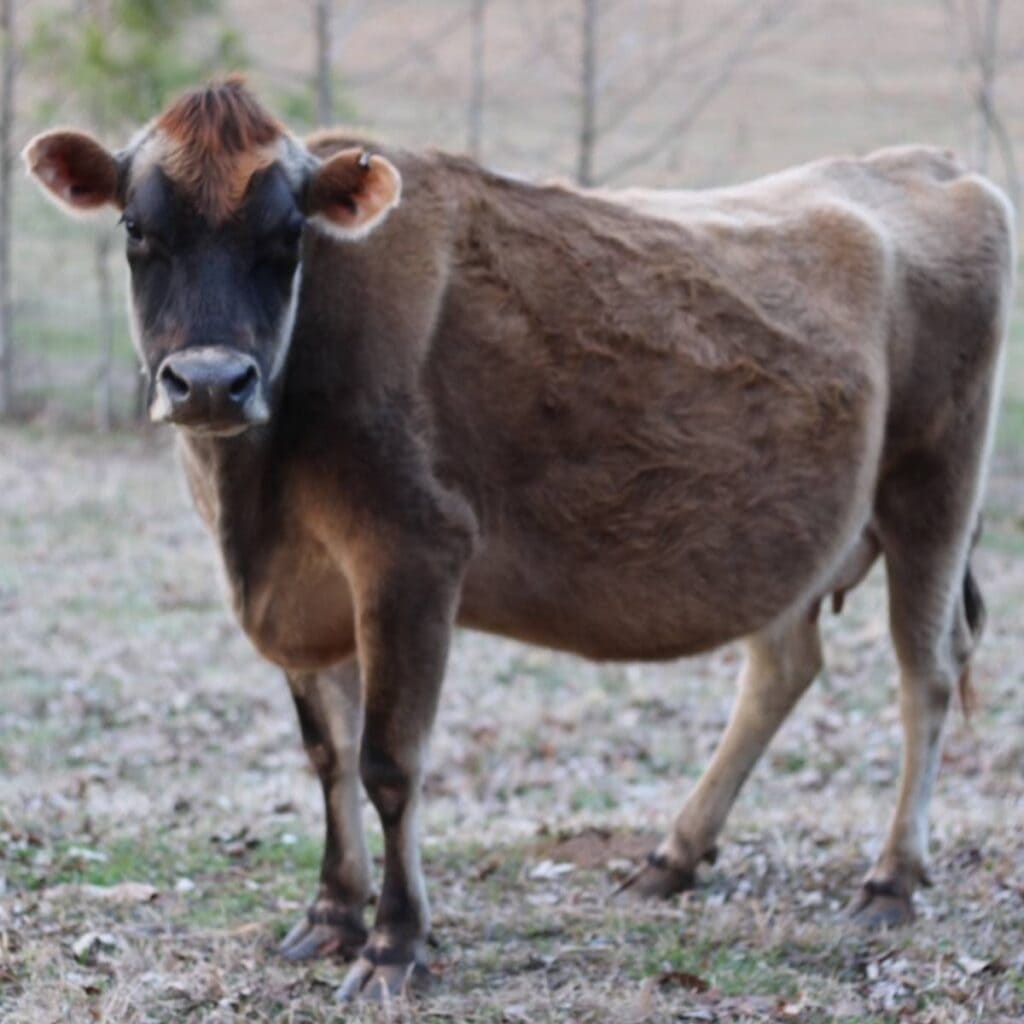
Some popular heritage milking cow breeds that can forage well on less-than-ideal pasture include:
- Jersey
- Dexter (a good dual-purpose breed: milk or beef)
- American Kerry
- American Milking Devon (originally a tri-purpose breed: milk, beef, draft)
Some popular heritage milking cow breeds that need quality pasture include:
- Dutch Belted
- Guernsey
18. Don’t buy a milk cow until you have perimeter fencing in place.
You don’t want your expensive investment to walk off your property, so it’s best to wait until your perimeter fencing is in place before you buy a milk cow.
Cross fencing on your farm can be as simple as some hot wire that you move around to rotationally graze your cow. However, perimeter fencing is permanent and should not be flimsy.
Protect your investment and make sure your permanent fencing is in place before buying your milk cow and bringing her home.
19. Don’t buy a milk cow until your water system is in place.
Cows drink anywhere from 10 to 25 gallons of water per day or more, so don’t buy a milk cow until you have an efficient water system in place.
Cows can easily drink one gallon of water per 100 pounds of body weight. And dairy cows that have just calved and are lactating (producing milk) can drink double that.
It’s not efficient to get up early every day to haul water across your farm. There will absolutely be days when you get sick or otherwise tied up and can’t make it out to fill the water trough. While this can be done in the short term, it’s not a great long-term solution.
It’s a good idea to hook up your water trough to a water pipe. Also, install a float valve onto your water trough so that water will fill the tank automatically as your cows drink it.
20. Don’t buy a milk cow until you have a stall set up to protect her calf.
It can take time to build a proper structure, so don’t buy a dairy cow until you have somewhere to keep and protect her calf at night.

If you follow my advice and buy a bred dairy cow, it won’t be long before she has her calf. That’s when she starts lactating and producing milk.
In order to milk your cow, you will have to separate the baby from the mother for several hours. This is best done at night so that you can milk the following morning.
Since a lot of predators come out at night, it’s crucial that you have a safe place to protect the baby since the mama cow won’t be with her baby.
21. Don’t buy an expensive or exotic breed of milk cow.
Buying a rare or exotic breed of milk cow should be avoided if you can help it. The only exception to this is if there are rare and exotic cows near you for a fair price.
Dairy cows are already going to be expensive. If you’re a first-time dairy cow owner, it’s better to pay a cheaper price for a more common cow that’s closer to you.
Paying for a cow plus delivery can get very expensive. Don’t tack on a higher cost by choosing a rare or expensive breed.
Next Steps
If you enjoyed this post, check out the other blog posts in this series!
Easiest Home Pregnancy Tests for Livestock
Shop This Post
California Mastitis Test Rapid Test for Early Detection of Mastitis
Pin It For Later!
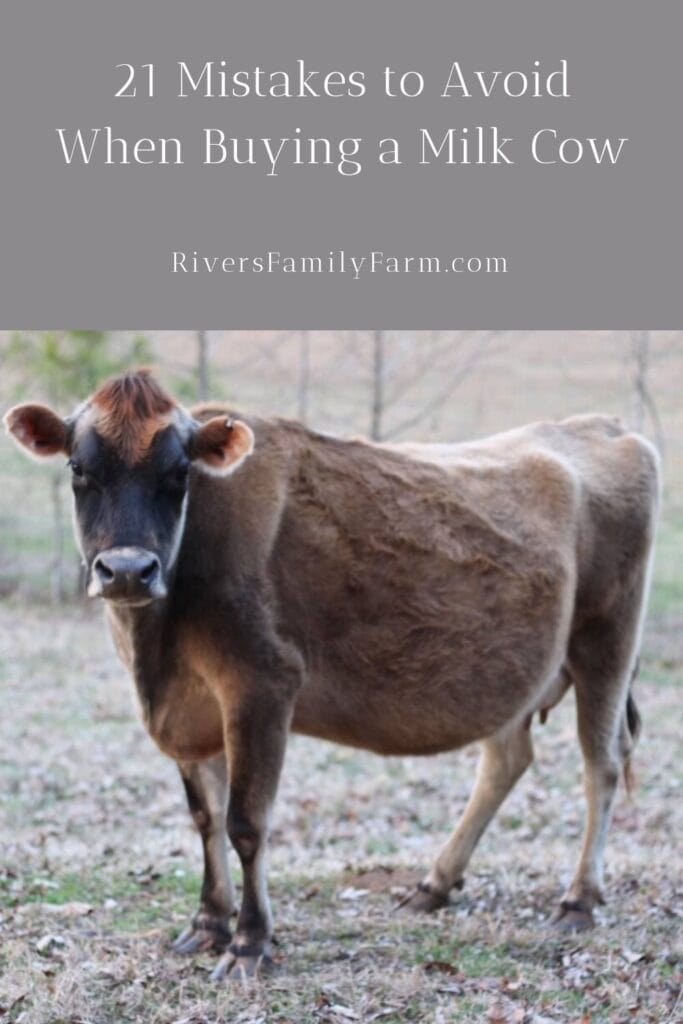
Other Related Posts
How Much Milk Does a Jersey Cow Produce?

